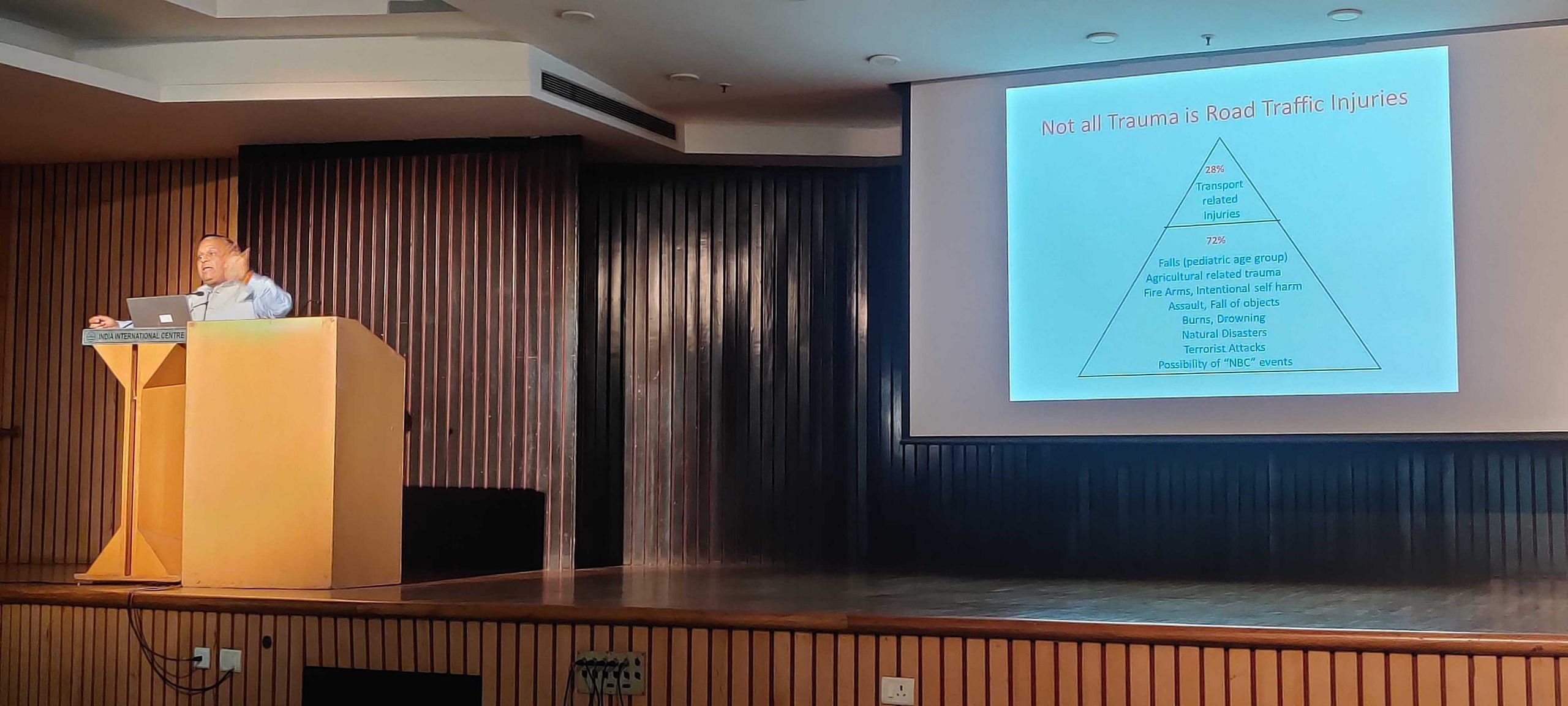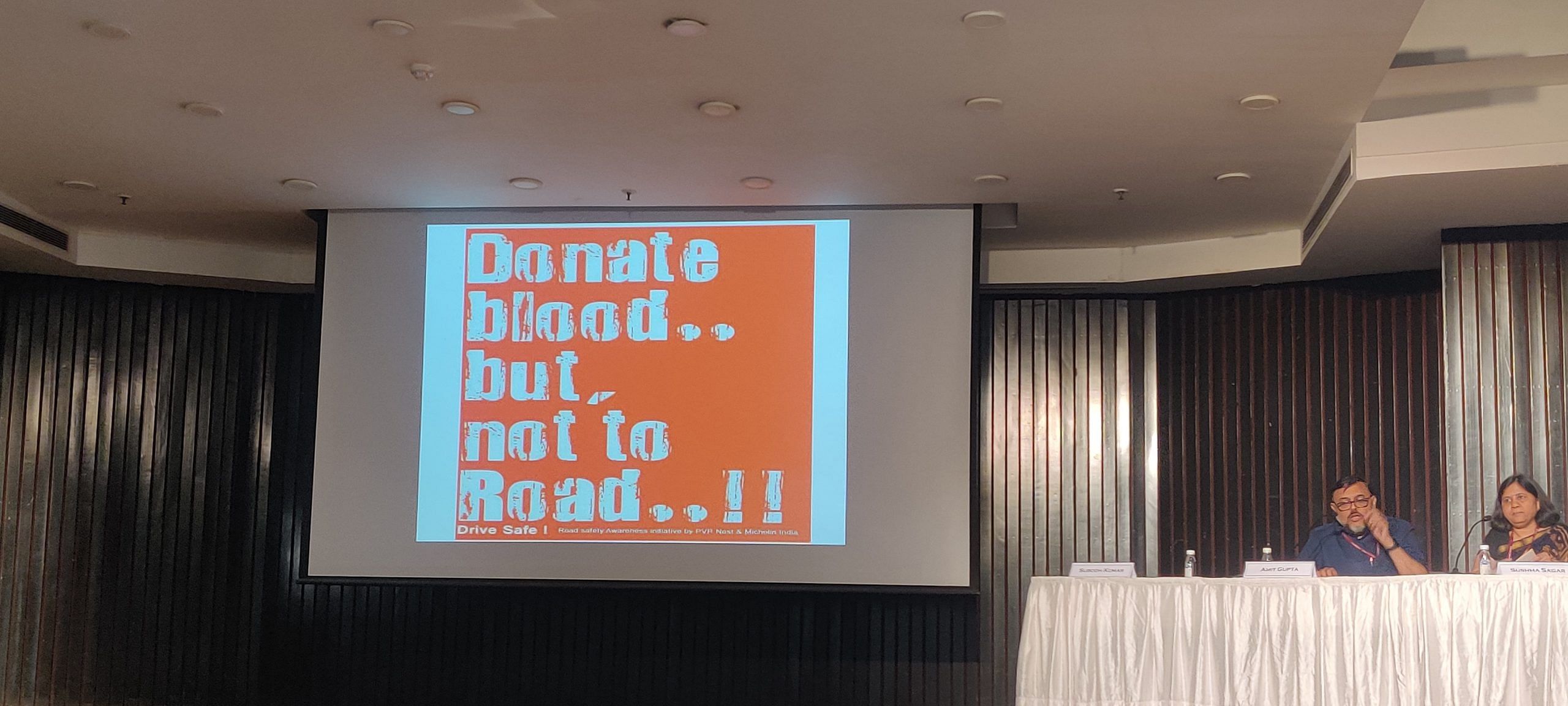New Delhi: Trauma doctors want people to stop being reel-recording bystanders. If road accidents and injuries are neglected diseases of modern society, then people’s inaction only makes it worse.
“God can’t be everywhere,” said Dr Ashwani Kumar, who organised a workshop on prehospital trauma care at New Delhi’s India International Centre earlier this month. Some of the city’s top trauma doctors from All India Institute of Medical Sciences weighed in on how practical knowledge and timely help can save lives. And you don’t need a medical degree.
It’s about making that call to emergency services, knowing what to pack in a first aid kit, dealing with the police, and understanding the Good Samaritan Law that protects citizens who’ve stepped in to help road accident victims from police harassment. The aim of the workshop was to show people how they can be effective and good samaritans in a crisis. And how to use that magical window which may determine whether a victim lives or dies.
“As first responders, we want you to be equipped with knowledge of providing immediate relief to the patient while expert help is on the way,” said trauma surgeon Dr Amit Gupta, one of the panellists.

Also read: India losing its status as a conservation leader. Our laws aren’t stopping march to decline
Poetry, one-liners and emergency care
The workshop could have easily become a preachy session on dos and don’ts. Instead, Dr Ashwani Kumar tackled the sombre subject through quirky one-liners and shayari, while introducing the panellists.
“Nawaz deobandi ne aison ke liye kaha hai, Tum unki khamosh tabiyat pe tanj mat karna, sochti bahut hai, bolti bahut kam hai” (Don’t judge her silent nature. She thinks a lot but doesn’t speak much),” he said, while introducing Dr Sushma Sagar, a professor of trauma surgery at JPN Apex Trauma Centre, AIIMS.
What would you put in a first aid kit, moderator Dr Subodh Kumar asked her.
“We always have this myth that a first aid kit is a fancy kit. It is not comparable to a vanity kit. It contains minimal things that are very easily available and accessible for everyone,” said Sagar. It should have basic items like sterile bandages, distilled water and gloves.
One bit of advice had everyone sit up and listen: Don’t ice burn wounds. According to Sagar, it’s instinctive to do that, but the best approach is to warm the area. Wrap it in a clean cloth or a blanket, she suggested.
The session was part of the series called ‘Dialogues in Health and Wellness’ conceptualised by Dr Ashwani Kumar where doctors weigh in on one medical topic every month through panel discussions and workshops.
By asking each of the three panellists one key question, Dr Subodh Kumar kept the conversation flowing. Singh spoke about the role of bystanders—the first responders before emergency services arrive on the scene. But when he asked the audience if they knew the emergency numbers (112 and 100), many complained about the lack of response.
“100 is totally useless. That’s why they have now introduced 112, a centralised number, which can correlate with medical power,” said an audience member from the front row.
But first aid is not just help offered by medical professionals, it’s simply what’s administered by the first person on the scene. “Whatever skills and knowledge you have, which can sustain any life, until medical help or trained help arrives, that is first aid,” said Singh.
In a detailed presentation later in the workshop, the doctors showed the kind of actions that people can take to help victims. How to stabilise the neck and head, recovery positions to maintain “airwave (windpipe) patency” and so on.
“First and foremost, scene safety is very important,” warned Dr Amit Gupta. “You have to think with a calm mind about the scene you are going to enter, whether it is in your control or not.”
Dealing with the police
The doctors did not limit their conversation to emergency care. A part of the session was devoted to navigating the police and the law—a huge deterrent to people stepping forward to help.
Nobody wants to get into trouble with the police, said Dr Sanjeev Lalwani, professor of forensic medicine.
“Those who don’t follow the law should be afraid of the law,” he joked before explaining the benefits of the Good Samaritan Law. The important legislation protects citizens who help accident victims in good faith from harassment or any sort of liability.

But even while encouraging people to come forward and help, all the panellists added a caveat—help yourself before you help others.
The session ended with a message on the screen that read “Donate blood…but not to the road..!!” but not before Dr Ashwani Kumar broke into a song: “Chhupaa lo/Yun dil mein pyaar meraa/Ke jaise mandir mein lau diye ki” (Keep my love safe in your heart, like a flame in a temple.)
(Edited by Theres Sudeep)






